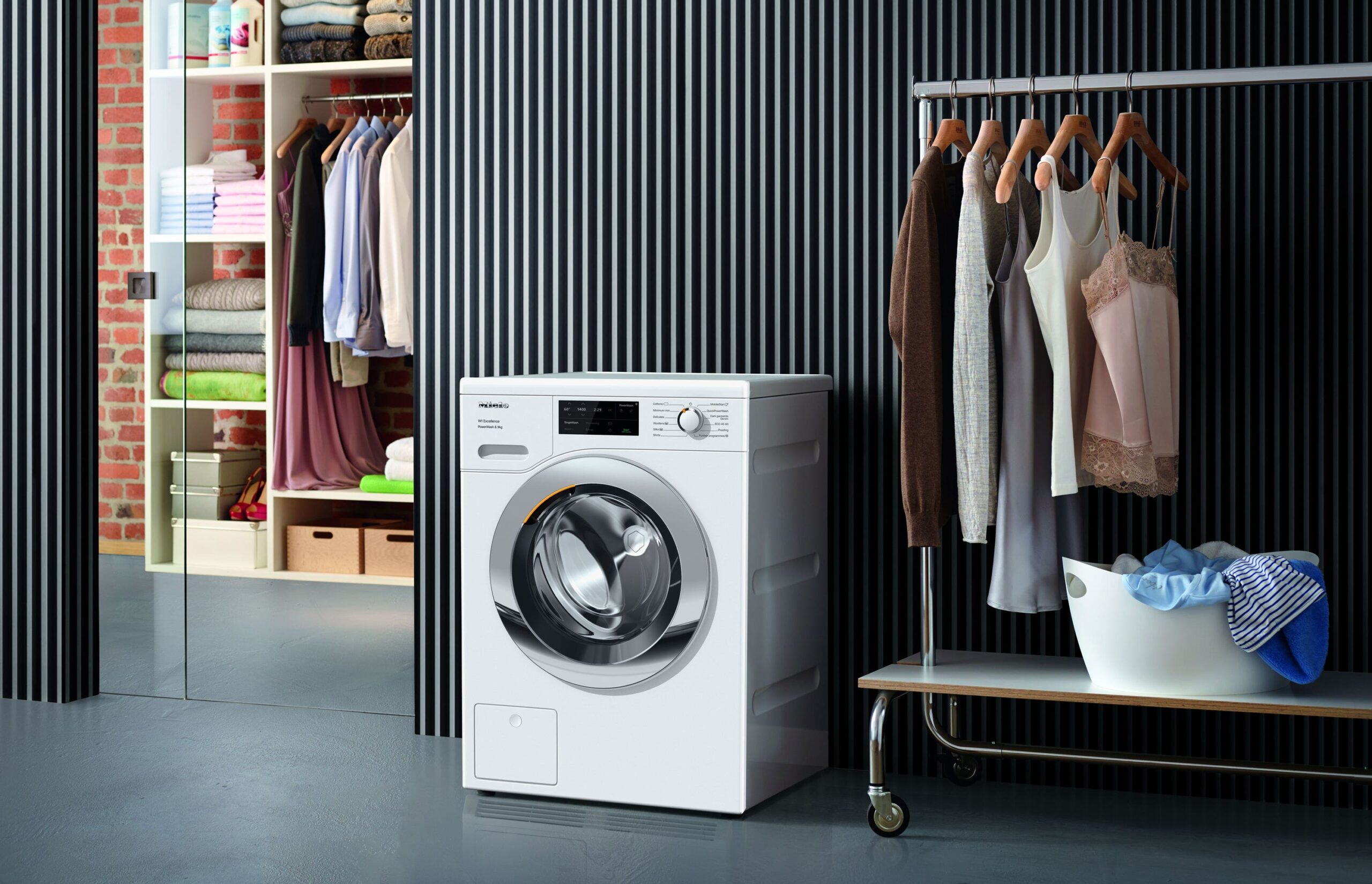How often should you clean your household appliances?
Expert tips on how to keep crucial devices spic and span.
When you’re cooking all manner of deliciousness, trying to keep up with the laundry and stocking the fridge with smart staples and little luxuries, it can be hard to monitor your cleaning rota.
Not the nicest of chores, it’s easy to turn a blind eye to grease, grime and bacteria building up inside those appliances.

“The most important tip when cleaning your appliances is to make sure you check your operating manual, as advice may vary depending on the make and model,” says Rosie Clarke, product training manager at Miele GB.
To help you get off on the right foot, here are some expert-recommended guidelines…
Dishwashers

“For dishwashers, the filter should be checked after every use to remove any food deposits, pips or bone fragments, and rinsed under the tap if it looks clogged or dirty. A dishwasher cleaning product should be run through on a hot wash once every few months to clear any fat deposits or build-up in the pipes,” advises Clarke.
Once a month, it’s also recommended to look at the spray arms. “If you spot any gunk clinging to the rubber nozzles, wipe it away with an old toothbrush and vinegar, whilst also giving the arms a good wipe to remove any residue,” adds Richard Howarth, large appliance expert at AO.com.
Washing machines

For washing machines, Clarke says it’s important to ensure you’re regularly running a hot wash – above 60 degrees – to avoid oils building up in the machine.
“Use biological washing powder in an empty machine and let the wash run though – this should be done once a month unless you regularly run hot washes for things like towels,” she suggests. “The door seal should also be cleaned of any debris and wiped down after every wash, and the drain filter should be checked and cleaned once a month to remove any trapped items or build-up of hair.”
Tumble dryers
“The filters should be cleared of visible fluff after every cycle, and washed regularly in warm water to remove any additional build-up. The regularity of this depends on the level of use, but many dryers will have indicator lights to show you when filters need cleaning,” notes Clarke.
Ovens

Ovens should be cleaned once a month – or more regularly if you’re an avid cooker, says Howarth. “Take out your oven shelves and soak in the sink – or bath if needed – with warm water and a dedicated oven cleaner, making sure to follow the instructions. If this option isn’t viable, you can always pop your oven racks in a dishwasher if they’ll fit.
“Similarly, using an oven cleaner, you can wipe down the inside of the oven, as long as it’s totally cooled down before doing so. The door can be easily cleaned using bicarbonate of soda and water mixed into a paste. Rub onto the door and leave for 20 minutes, before wiping off with a damp cloth. More modern ovens now feature pyrolytic self-cleaning functions, so it’s something to look out for if you hate cleaning the oven!”
Fridge freezers

“If you like lots of fresh, unpackaged foods, it might be more suitable to deep clean your fridge every month. However, if you’ve lots of bottled or packaged foods, it might not require a deep clean for three to six months,” says Howarth.
“Firstly, take out the salad drawers and shelves, and allow them to warm up to room temperature – especially important if you have glass drawers or shelves. Then clean them with washing-up liquid and leave to fully dry, or pop them in the dishwasher if they fit.
“Using baking soda and vinegar, or warm water and lemon, wipe down the inside of the fridge and all shelves in the door too. Then, get a damp cotton bud to clean where the shelves rest and the corners of the door shelves, to get into those hard-to-reach places. Dry the inside fully with a dry tea towel or kitchen roll, before putting everything back inside.”
Microwaves

According to Howarth, we should be deep cleaning our microwaves once a month. A good way to do so is to fill a microwavable bowl half full with water and a couple of tablespoons of baking soda. “Pop the microwave on for three minutes, allow to cool for a minute and wipe the inside with a clean cloth,” he says.
“To freshen up and remove odours, it’s a similar process: [get] a bowl of water, a good squeeze of lemon and a small amount of white wine vinegar, and pop the microwave on for a minute. Wipe the residue away or leave to air dry fully before closing the door. Use a dedicated stainless steel or all-purpose cleaner for the outside, to keep the handle and buttons clean.”
The Press Association
Latest posts by The Press Association (see all)
- What you need to know about weight loss jabs and how to make them work effectively - April 25, 2025
- Is our skin more susceptible to sun damage as we age? - April 25, 2025
- Special stamps to mark 80th anniversary of VE Day - April 24, 2025
- Test your knowledge with our penguin-themed quiz - April 24, 2025
- Prince Louis shows off missing front teeth in new photo to mark seventh birthday - April 23, 2025



















